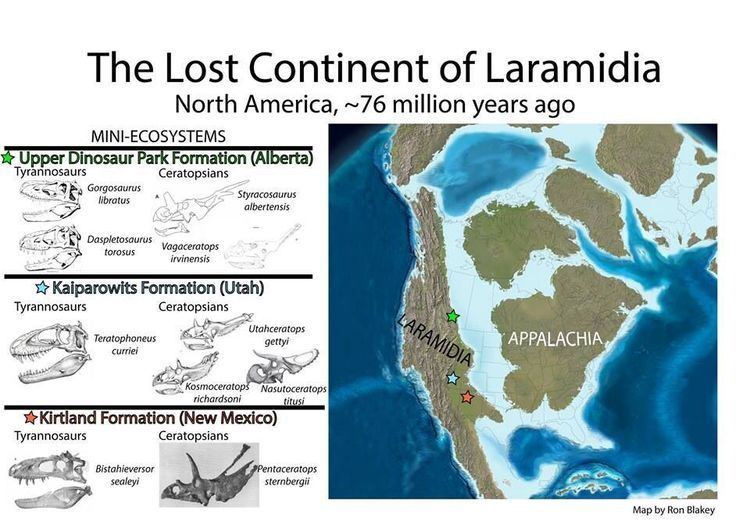 | ||
Dinosaur discoveries laramidia
Laramidia was an island continent that existed during the Late Cretaceous period (99.6–66 Ma), when the Western Interior Seaway split the continent of North America in two. In the Mesozoic era, Laramidia was an island land mass separated from Appalachia to the east by the Western Interior Seaway. The seaway eventually shrank, split across the Dakotas, and retreated towards the Gulf of Mexico and the Hudson Bay. The masses joined to unite the North American continent.
Contents
The name was coined by J. David Archibald in 1996.
Laramidia paleo talks ep 14
Geography
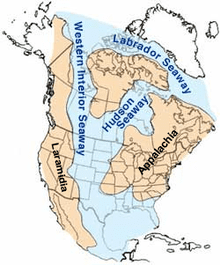
Laramidia stretches from modern-day Alaska to Mexico. The area is rich in dinosaur fossils. Tyrannosaurs, dromaeosaurids, troodontids, hadrosaurs, ceratopsians (including Kosmoceratops and Utahceratops), pachycephalosaurs, and titanosaur sauropods are some of the dinosaur groups that lived on this landmass.
Range
Vertebrate fossils have been found in the region from Alaska to Coahuila.
Fauna
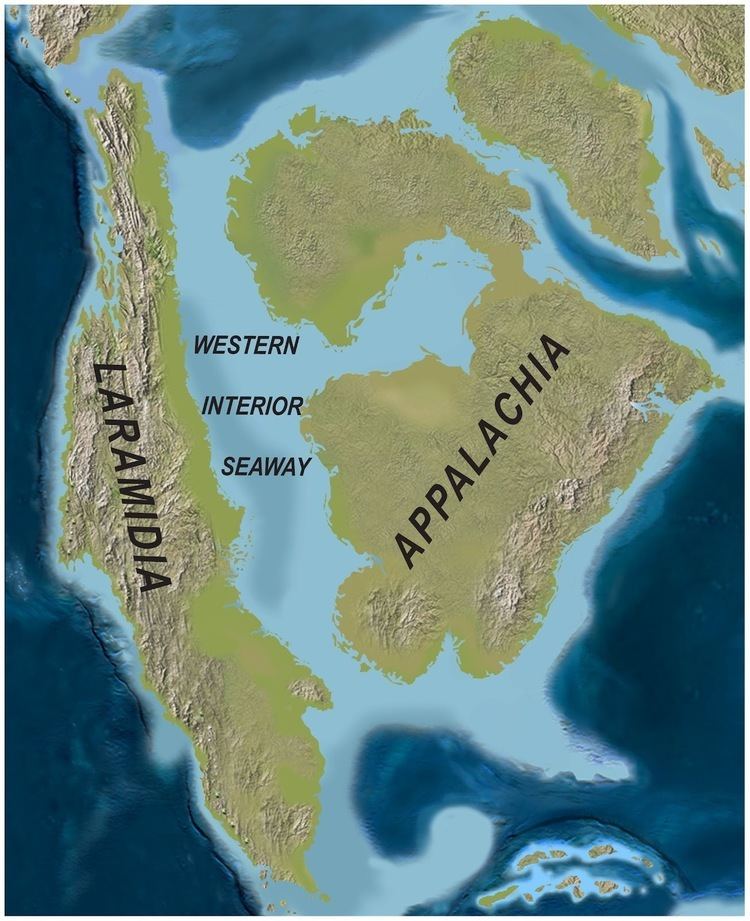
From the Turonian age of the Late Cretaceous to the very beginning of the Paleocene, Laramidia was separated from Appalachia to the east. As a result, the fauna evolved differently on each land mass over that time. Geological conditions were generally favorable for the preservation of fossils in Laramidia, making the western United States one of the most productive fossil regions in the world. Less is known about Appalachian biodiversity in the Cretaceous as few fossiliferous deposits exist in the region today and half of the fossil beds in Appalachia were destroyed during the Pleistocene ice age. However, fossil beds which haven't been discovered yet could exist in areas of the former Appalachian continent.
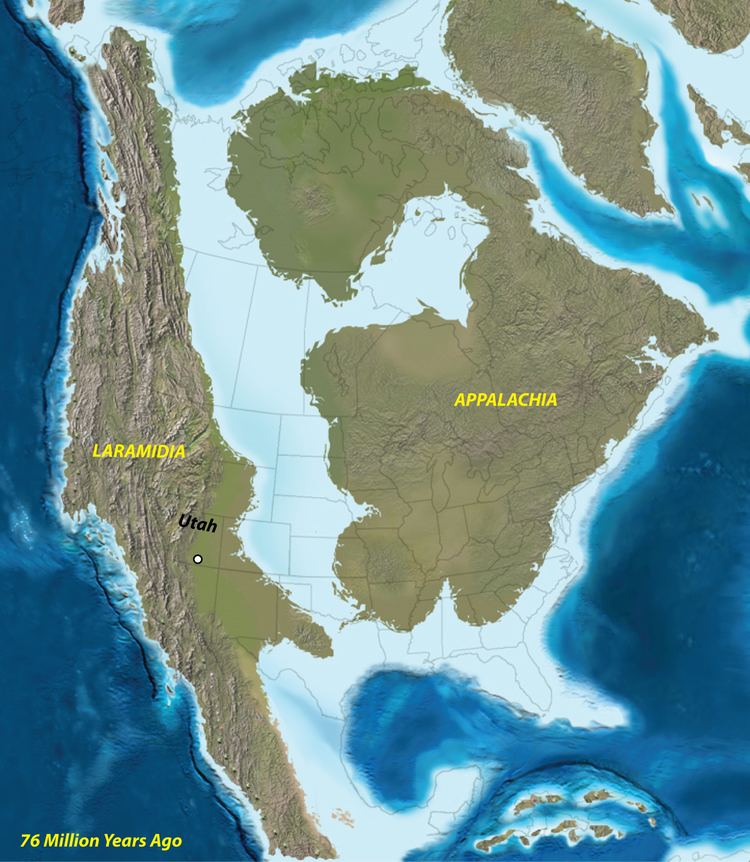
In western North America during the Cretaceous the dominant predators were the tyrannosaurs, huge predatory theropods with proportionately massive heads built for ripping flesh from their prey. In Laramidia the top of the terrestrial food chain was occupied by the theropods of Tyrannosaurinae such as Tyrannosaurus rex, Nanuqsaurus hoglundi, Daspletosaurus, Teratophoneus, and theropods of Albertosaurinae such as Albertosaurus and Gorgosaurus, all being included under the same family of Tyrannosauridae and not actually contemporary. The bodies of tyrannosaurs exhibited huge heads and legs, in contrast to proportionally tiny arms. The teeth exhibited in this family are rather comparable to railroad spikes and would have helped inflict major damage on prey.
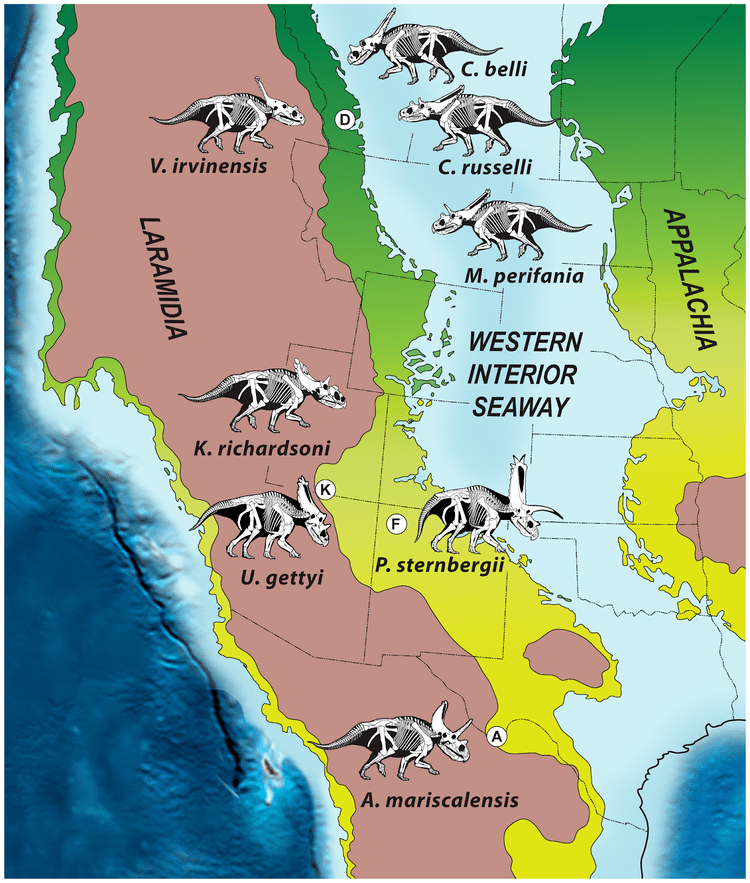
Another common group of North American dinosaurs were the hadrosaurs. The fossil record shows a staggering variety of hadrosaur forms in Laramidia.
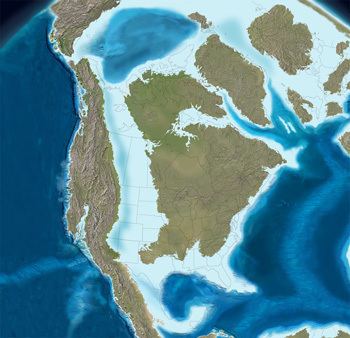
Other differences in genera appear between the island land masses. Sauropods roamed Laramidia during the Cretaceous after apparently dying out in Appalachia. Nodosaurs, though, appear to have been more plentiful in Appalachia. Nodosaurs were large, herbivorous armored dinosaurs resembling armadillos. They were scarce in Laramidia by the late Cretaceous, existing only in specialized forms like Edmontonia and Panoplosaurus while nodosaurs were thriving in Appalachia.
